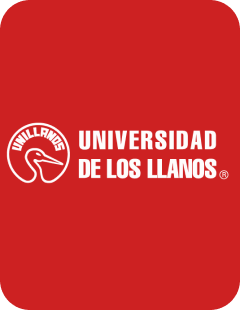Publicación: Ecotoxicology of polycyclic aromatic hydrocarbons and petroleum wastewater in the orinoquia region
| dc.contributor.author | Calderón-Delgado, Ivonne | |
| dc.contributor.author | Velasco Santamaría, Yohana María | |
| dc.contributor.author | Corredor-Santamaría, Wilson | |
| dc.date.accessioned | 2024-11-15T21:48:53Z | |
| dc.date.available | 2024-11-15T21:48:53Z | |
| dc.date.issued | 2023-09-20 | |
| dc.description.abstract | Polycyclic aromatic hydrocarbons (PAH) are ubiquitous and characterized by low solubility, persistence in the environment, bioaccumulation in biota and high toxicity. Aquatic systems receive PAH through atmospheric deposition and direct runoff release, with the organisms that inhabit them being their main targets. Among these, fish are of particular interest because they occupy key positions in aquatic and terrestrial food webs. Petroleum extraction is one of the most relevant sectors in Colombia's economy; however, the environmental impact due to oil extraction and spillage accidents has generated contamination of soils and water sources, mortality of fauna and flora or changes in the dynamics of natural ecosystems, among others. Biomonitoring of oil pollution using aquatic organisms, especially native species has a great ecological relevance. In this sense, fish are considered as one of the main sentinel species to assess the state of aquatic ecosystems because they are ubiquitous in most aquatic environments exposed to contaminants and also because of their ecological relevance. Our data show alterations in fish from oil industry wastewater discharge sites and fish exposed to different PAH. In fact, concentrations of 250 and 70 ng/L of naphthalene (NAP) and phenanthrene (PHE), respectively, were recorded in rivers exposed to the discharge of produced water. Subacute exposures to sublethal concentrations of NAP 100 µg/g, PHE 50 µg/g and benzo[a]pyrene (BaP) 10 µg/g were evaluated. The results shown presence of genotoxicity in peripheral blood erythrocytes and nuclear abnormalities being higher in fish exposed to PHE, followed by BaP, and NAP, alteration in antioxidant response, fish exposed to BaP showed a significant increase in 7ethoxyresorufin-O-deethylase activity compared to the control, and presence of deleterious changes in tissue architecture such as hyperemia, degeneration of the nuclei, cytoplasmic degeneration, and vacuolization that could lead in the long term to a decline in fish populations exposed to these conditions. In conclusion, the results show that native Colombian fish such as Aequidens metae, Astyanax gr. bimaculatus and Piaractus orinoquencis are good sentinels of freshwaters potentially contaminated by hydrocarbons or in laboratory studies aimed at understanding the impact of petroleum compounds. Acknowledgment: This study was funded by Colciencias-ANH and Universidad de los Llanos Project number 112272151869, grant 721 – 2015. | eng |
| dc.description.notes | SETAC Latin America 15th Biennial Meeting | |
| dc.format.extent | 769 páginas | |
| dc.format.mimetype | application/pdf | |
| dc.identifier.citation | Calderón Delgado, I., Corredor Santamaría, W. y Velasco Santamaría, Y. M. (2019). Ecotoxicology of polycyclic aromatic hydrocarbons and petroleum wastewater in the orinoquia region (p. 692). Universidad de los Llanos. | |
| dc.identifier.instname | Universidad de los Llanos | |
| dc.identifier.reponame | Repositorio digital Universidad de los Llanos | |
| dc.identifier.repourl | https://repositorio.unillanos.edu.co | |
| dc.identifier.uri | https://repositorio.unillanos.edu.co/handle/001/4826 | |
| dc.language.iso | eng | |
| dc.publisher | Society of Environmental Toxicology and Chemistry (SETAC) Latin America 15 Biennial Meeting | |
| dc.publisher | Universidad de los Llanos | |
| dc.publisher.place | Montevideo, Uruguay | |
| dc.rights | Derechos Reservados - Universidad de los Llanos, 2023 | spa |
| dc.rights.accessrights | info:eu-repo/semantics/openAccess | |
| dc.rights.coar | http://purl.org/coar/access_right/c_abf2 | |
| dc.rights.license | Atribución-NoComercial-CompartirIgual 4.0 Internacional (CC BY-NC-SA 4.0) | |
| dc.rights.uri | https://creativecommons.org/licenses/by-nc-sa/4.0/ | |
| dc.source | https://www.setac.org/discover-events/global-meetings/sla-15th-biennial-meeting.html | |
| dc.source | https://drive.google.com/drive/u/1/folders/1Jj6fqloG-A95gTWlrhYFZRfIHkpiNSPO | |
| dc.subject.proposal | PAH | eng |
| dc.subject.proposal | Petroleum | eng |
| dc.subject.proposal | Genotoxicity | eng |
| dc.subject.proposal | EROD | eng |
| dc.subject.proposal | Fish | eng |
| dc.title | Ecotoxicology of polycyclic aromatic hydrocarbons and petroleum wastewater in the orinoquia region | eng |
| dc.type | Evento científico | |
| dc.type.category | Divulgación pública de la ciencia | |
| dc.type.coar | http://purl.org/coar/resource_type/c_3248 | |
| dc.type.coarversion | http://purl.org/coar/version/c_970fb48d4fbd8a85 | |
| dc.type.content | Text | |
| dc.type.driver | info:eu-repo/semantics/conferenceObject | |
| dc.type.version | info:eu-repo/semantics/publishedVersion | |
| dspace.entity.type | Publication | |
| person.identifier.cvlac | https://scienti.minciencias.gov.co/cvlac/visualizador/generarCurriculoCv.do?cod_rh=0000337269 | |
| person.identifier.gsid | https://scholar.google.com/citations?user=NX49diwAAAAJ&hl=en | |
| person.identifier.orcid | 0000-0002-6845-1663 | |
| person.identifier.orcid | 0000-0003-3155-5458 | |
| relation.isAuthorOfPublication | 4a67d47a-75a6-45a0-ac93-0aa9c4fb0cea | |
| relation.isAuthorOfPublication | ddd2e33b-edf7-4c59-9851-72e511ea1c93 | |
| relation.isAuthorOfPublication.latestForDiscovery | 4a67d47a-75a6-45a0-ac93-0aa9c4fb0cea |
Archivos
Bloque de licencias
1 - 1 de 1
Cargando...

- Nombre:
- license.txt
- Tamaño:
- 15.18 KB
- Formato:
- Item-specific license agreed upon to submission
- Descripción:

